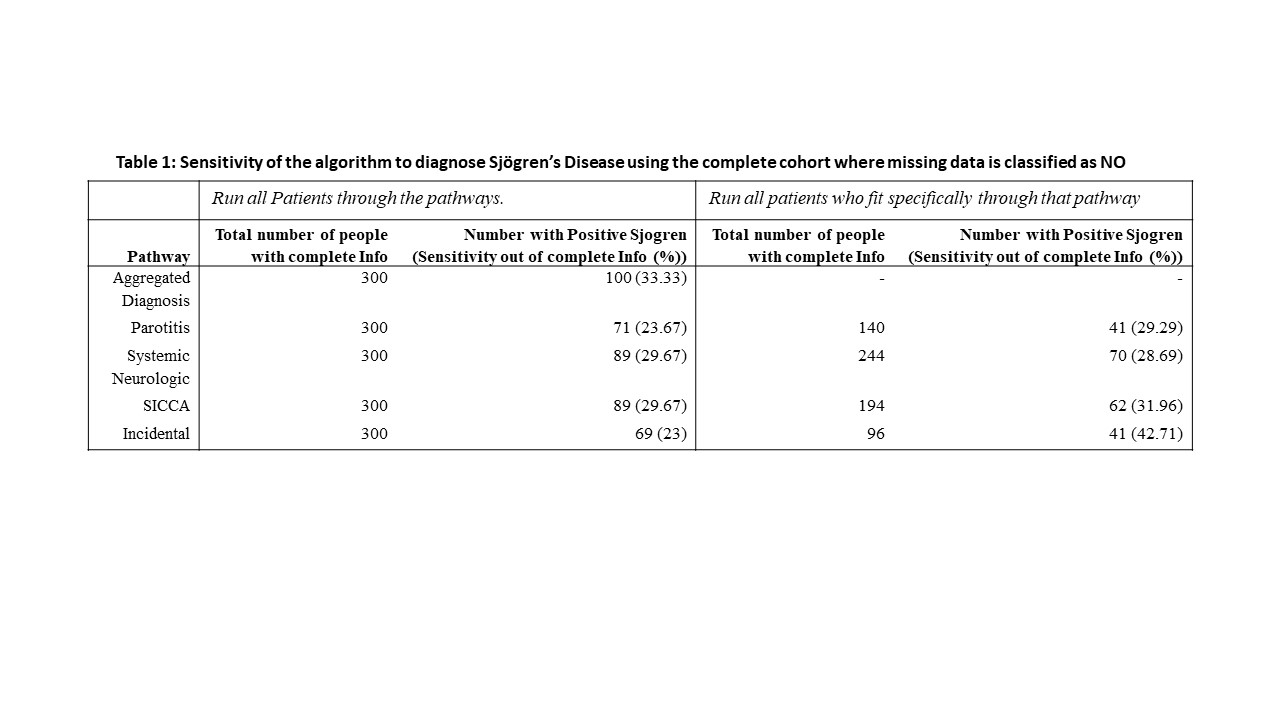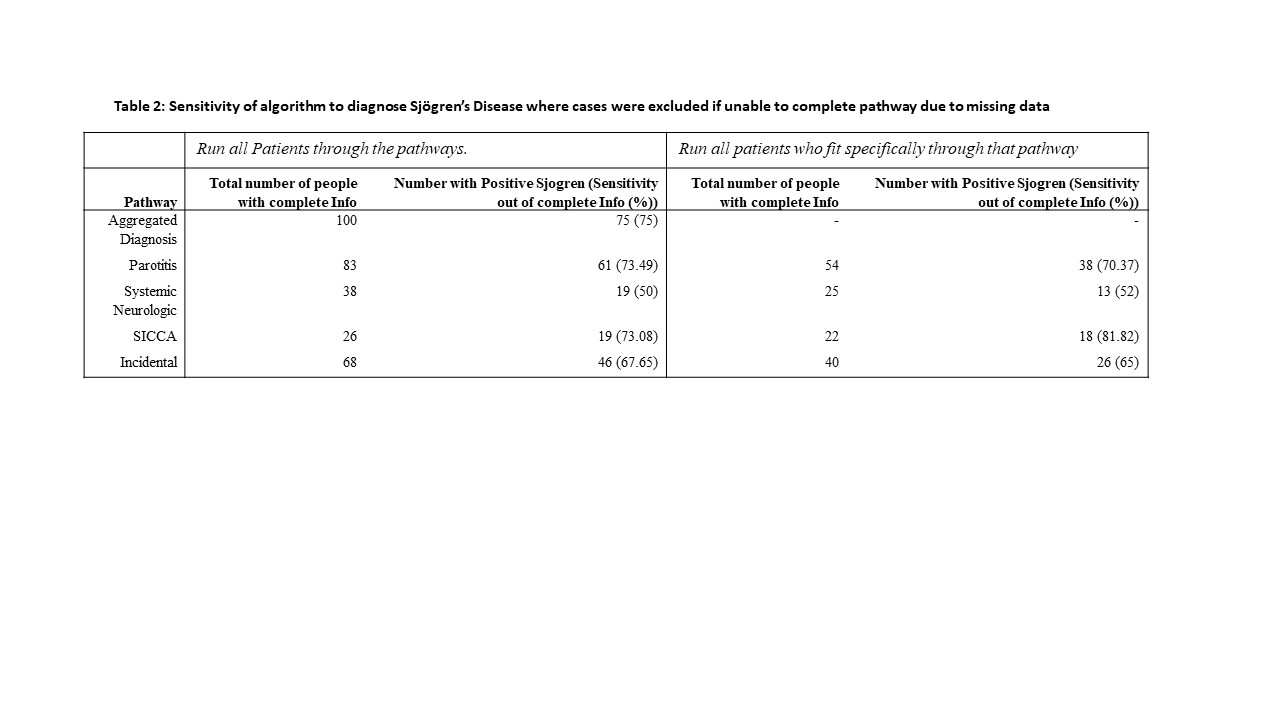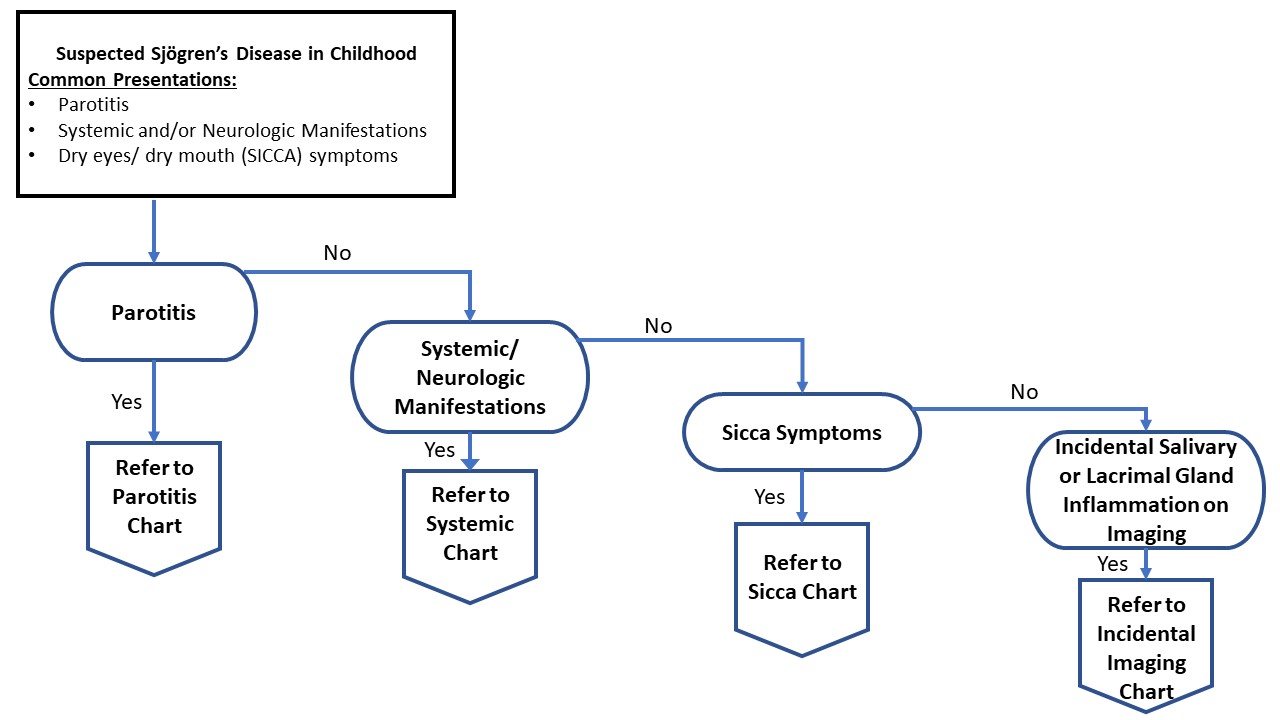Session Information
Date: Monday, November 13, 2023
Title: (1221–1255) Pediatric Rheumatology – Clinical Poster II: Connective Tissue Disease
Session Type: Poster Session B
Session Time: 9:00AM-11:00AM
Background/Purpose: There are no widely accepted diagnostic or classification criteria for childhood Sjögren’s disease (cSjD). To address the urgent need for consensus, the Childhood Arthritis and Rheumatology Research Alliance (CARRA) Sjogren’s Workgroup created a clinical diagnostic algorithm for cSjD. This study evaluates the sensitivity of the diagnostic algorithm to diagnose cSjD using an international cohort of patients.
Methods: The diagnostic algorithm was developed per expert opinion and has four distinct clinical pathway entry points: Parotitis (P), Systemic/Neurologic Manifestations (SN), Sicca symptoms (SIC) and Incidental Salivary or Lacrimal Gland Inflammation on Imaging (INC). The algorithm classifies patients as cSjD, probable cSjD, and negative for cSjD. The validation cohort was an international cohort of 300 cSjD cases, which includes extensive demographic and clinical information. De-identified clinical data from the cSjD cohort was put through the diagnostic algorithm. A response of Sjögren’s disease (SjD) and probable SjD was classified as “positive” for SjD and all other responses were classified as “negative”. Two analyses for the sensitivity of the algorithm for diagnosis were performed, one putting all patients through all pathways, and the other with patients only being put through the pathway they would meet criteria for entry into.
Results: The cSjD cohort (n=300) is 83% female with a mean age of diagnosis of 12 (9,15) years. Among the 300 cSjD cases, 100 (33%) were positive based on the algorithm across all pathways. 100 patients had adequate data allowing them to complete at least one of the 4 pathways, 75% of whom were positive across all pathways. Within each pathway, sensitivity of the algorithm ranged from 23-43% (all cases, Table 1) and 50-82% (limited to cases with complete data, Table 2). The proportion of patients without information for each variable is as follows: parotid biopsy (98%), ocular or oral screen (91%), minor salivary gland biopsy (65%), salivary gland ultrasound (65%) and positive SSA or SSB (2%).
Conclusion: The sensitivity of the algorithm was limited by the lack of completion of diagnostic studies commonly performed in adults with SjD. The P and SIC arms of the algorithm were the most sensitive arms of the algorithm. The SN arm was the least sensitive arm, possibly due to the inhomogeneous and rare presentations in cSjD. Invasive and difficult testing were the least likely to be completed. This algorithm has adequate sensitivity in the setting of complete data, suggesting it is an appropriate diagnostic algorithm for cSjD until a more sensitive, pediatric specific classification criterion can be developed.
To cite this abstract in AMA style:
Stern S, Basiaga M, Amoafo L, Cha S, Thatayatikom A, Treemarcki E, Randell R, Dizon B, Diianni J, Tiger S, Orrock J, Appenzeller S, Edens C, Lieberman S. Evaluating a Diagnostic Algorithm for Childhood Sjögren’s Disease [abstract]. Arthritis Rheumatol. 2023; 75 (suppl 9). https://acrabstracts.org/abstract/evaluating-a-diagnostic-algorithm-for-childhood-sjogrens-disease/. Accessed .« Back to ACR Convergence 2023
ACR Meeting Abstracts - https://acrabstracts.org/abstract/evaluating-a-diagnostic-algorithm-for-childhood-sjogrens-disease/



